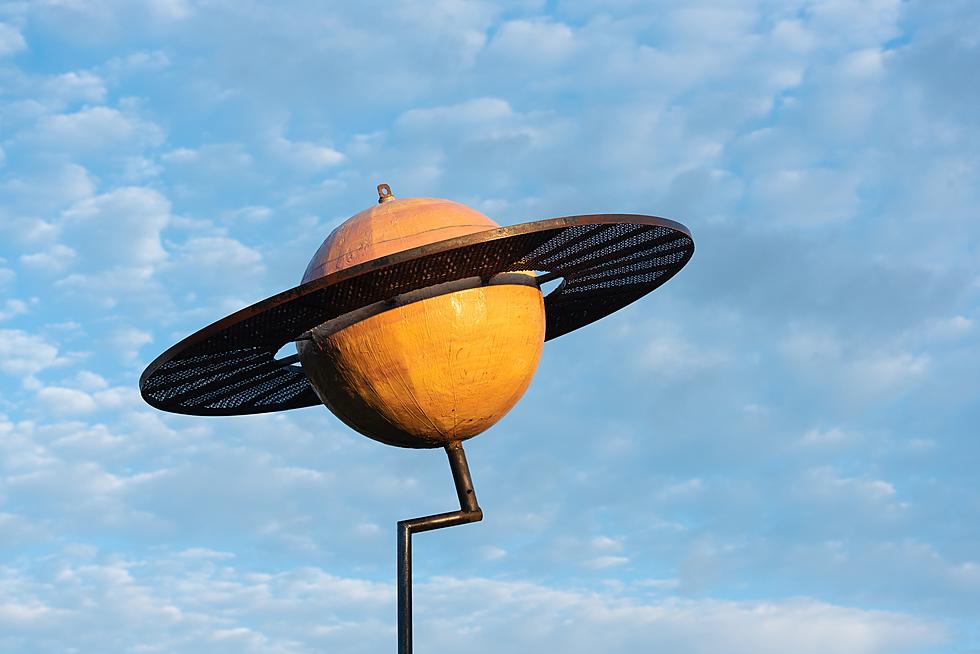
UMPI Showcases Solar System Model with Grant, Presque Isle, Maine
The University of Maine at Presque Isle has received a $7,500 enterprise grant for the Maine Solar System Model to help showcase it as a great tourist attraction.
The money came from the Maine Office of Tourism’s Marketing Partnership Program. A virtual media event took place September 22, 2021.
“Our dark, starry night skies have become an important tourism asset for our state. With this project we can better promote a connected experience, unique to Maine, that will encourage visitors to explore further and discover more of what Maine has to offer,” said Steve Lyons, Director of the Maine Office of Tourism.
Worldwide, it’s the second largest scale model of the solar system, and the largest in all of the western hemisphere. It goes from the Sun on the campus of UMPI to Topsfield where you find the planet Eris. That’s 100 miles on Route 1. The perfect attraction for social-distancing.
“Traveling through our solar system along U.S. Route 1 has been a unique offering in northern Maine since the Maine Solar System Model was established in 2003,” UMPI President Ray Rice said. “Through the support from the Maine Office of Tourism, UMPI is now better able to share with visitors—in person and virtual alike—the many things that make our model so special, and encourage them to get out and discover the scope of our solar system for themselves.”
“There’s nothing like driving up Route 1, waiting to spot the next planet and realizing the immense distance between each of our planets,” Kevin McCartney, founder of the Maine Solar System Model, said. “In our model, one mile equals one astronomic unit—the distance from the earth to the sun, or 93,000,000 miles—so a person traveling at seven miles an hour would be moving at the speed of light. Now, we don’t encourage people to travel that speed along Route 1, but the idea certainly puts things into cosmic perspective.”
“These materials, crafted by UMPI’s Marketing and Communications team, were designed with user-friendliness and fun in mind, and are packed full of science information,” Dr. Deborah Roark, Executive Director of University Advancement and External Affairs and grant administrator, said. “We’re so proud to be making these new materials publicly available, increasing visibility and awareness for the model on social media, and partnering with regional groups to help spread the word.”
The grant helps to create a new brochure for the Maine Solar System Model, as well as the interactive website, video to watch and ways to learn more from the 3-D animation. You can see the new four-fold brochure at one of 62 chamber of commerce offices in the state of Maine, and also at the Maine Visitor Centers.

“The Maine Solar System Model is not an event that can be shut down or canceled, social distancing is a non-issue, and it is unaffected by COVID-19,” LaNiece Sirois, Central Aroostook Chamber of Commerce Executive Director, said. “These are just a few of the many reasons why the model, which is already a significant tourism draw for Aroostook County, is such an important part of our regional tourism offerings. It is crucial to ensure that everyone knows about and has a chance to experience this unique installation.”
“Projects like this are exactly what the Maine Office of Tourism Enterprise Grants program was designed to support,” Hannah Collins, Senior Tourism Officer and grants program manager for the Maine Office of Tourism, said. “The new materials, website and video will increase awareness of the existing Solar System model and amplify the visitor experience, providing yet another great reason to visit Maine.”
10 Ways Aroostook County Is Unlike Anywhere Else In Maine
READ ON: Weird, wild UFO sightings from throughout history
More From









